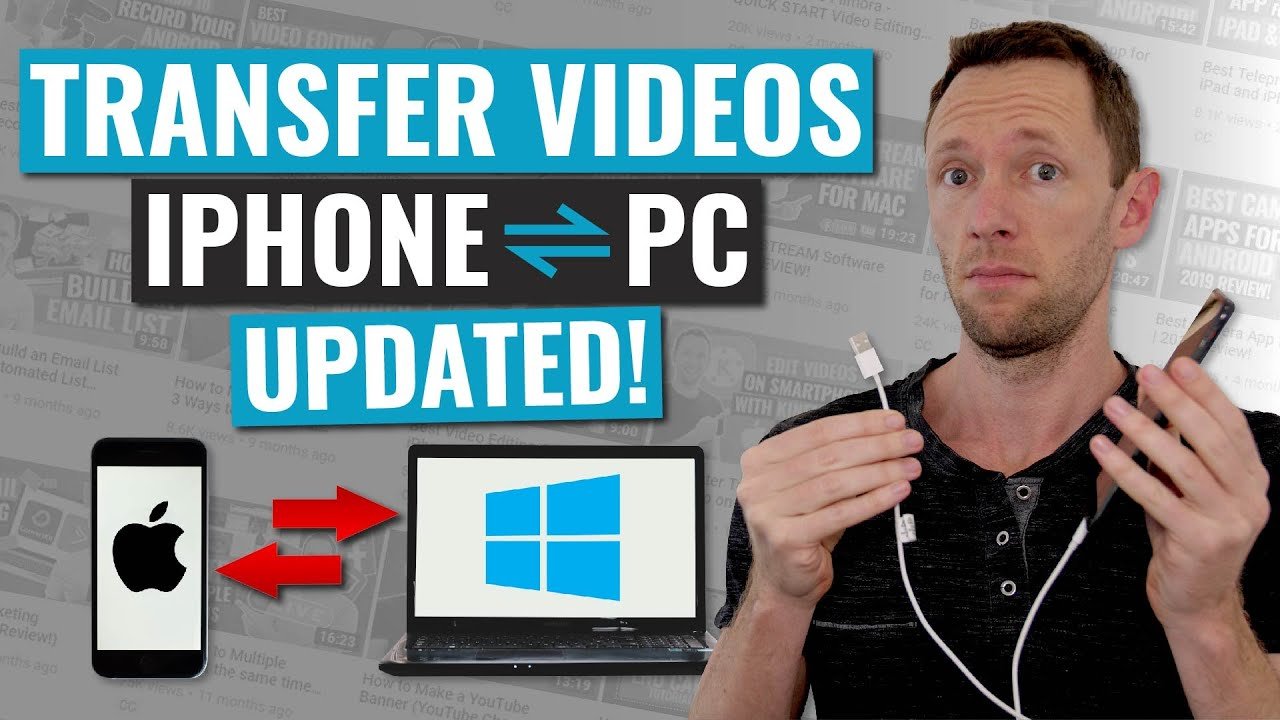In the era of smartphones, the iPhone stands out as a versatile tool for capturing memories through photographs. As these images accumulate, the need to transfer them to a computer becomes essential for storage, editing, or sharing purposes. This informative article is designed to guide you through the various methods of transferring photos from your iPhone to a computer, ensuring your precious memories are safely backed up.
Understanding the Basics
Before diving into the specifics, it’s crucial to understand the basics of photo transfer. The process involves moving your images from the iPhone’s storage to your computer’s hard drive or a cloud storage service. This not only helps in freeing up space on your iPhone but also secures your photos against loss due to device damage or loss.
Using a USB Cable
The most straightforward method to transfer photos is by using a USB cable – the same one you use to charge your iPhone.
- For Windows Users:
- Connect your iPhone to the computer using the USB cable.
- Unlock your iPhone and tap “Trust” on the prompt asking whether you trust this computer.
- Open the ‘Photos’ app on your computer, and click on the ‘Import’ button at the top right corner.
- Select ‘From a USB device,’ and follow the prompts to select and import your photos.
- For Mac Users:
- Connect your iPhone to your Mac using the USB cable.
- Unlock your iPhone and tap “Trust.”
- Open the ‘Photos’ app on your Mac. Your iPhone should appear in the sidebar under ‘Devices.’
- Select your iPhone, choose the photos you want to import, and click on ‘Import Selected’ or ‘Import All New Photos.’
Leveraging iCloud
iCloud provides a seamless way to sync photos across all your Apple devices, including transferring photos from your iPhone to your computer.
- Setting up iCloud Photos on Your iPhone:
- Go to ‘Settings’ > [your name] > ‘iCloud’ > ‘Photos.’
- Turn on ‘iCloud Photos.’ This automatically uploads and stores your entire library in iCloud to access photos and videos from any of your devices.
- Accessing Photos on Your Computer:
- For Mac: Ensure you’re signed in with the same Apple ID, and have ‘iCloud Photos’ enabled in the ‘Photos’ app preferences.
- For Windows: Download and install ‘iCloud for Windows.’ Sign in with your Apple ID, and enable ‘Photos.’ You can then access your iCloud photos via the ‘iCloud Photos’ folder in File Explorer.
Utilizing AirDrop
For Mac users, AirDrop offers a quick and wireless method to transfer photos.
- Ensure both your iPhone and Mac have Wi-Fi and Bluetooth enabled, and that both devices are within 30 feet of each other.
- On your iPhone, select the photos you wish to transfer. Tap the ‘Share’ icon and select ‘AirDrop.’
- Choose your Mac from the list of available devices. Accept the transfer on your Mac, and the photos will be saved in the ‘Downloads’ folder.
Email and Messaging
Though not the most efficient for a large number of photos, emailing or messaging photos to yourself is a straightforward method for transferring a few images.
- Select the photos on your iPhone and tap the ‘Share’ icon.
- Choose ‘Mail’ or your preferred messaging app, enter your email address, and send.
- Open your email or messaging app on your computer, download the photos, and save them to your desired location.
Third-Party Cloud Services
Apart from iCloud, several third-party cloud services like Google Photos, Dropbox, and OneDrive offer convenient ways to back up and transfer your photos.
- Download and install the app of your chosen service on your iPhone.
- Follow the app’s instructions to back up your photos to the cloud.
- Access the service on your computer via its website or desktop app, and download your photos.
Conclusion
Transferring photos from your iPhone to a computer is a straightforward process that can be accomplished through various methods, each with its advantages. Whether you prefer a direct cable connection, the convenience of iCloud, the simplicity of AirDrop, or the versatility of third-party cloud services, there’s an option that fits your needs. By regularly transferring your photos, you not only safeguard your memories but also keep your iPhone free of clutter, ensuring it runs smoothly. Remember to check compatibility and software requirements before starting, ensuring a smooth and efficient transfer process.
FAQs on How to Transfer Photos from iPhone to Computer
1. Do I need any special software to transfer photos from my iPhone to a Windows PC?
No, you do not need any special software to transfer photos from an iPhone to a Windows PC. Windows supports the iPhone as a camera device, allowing you to import photos using the built-in Photos app. However, for more seamless integration, especially for accessing iCloud photos, you might consider downloading iCloud for Windows.
2. Can I transfer photos from my iPhone to a computer without a USB cable?
Yes, you can transfer photos wirelessly without a USB cable using services like iCloud, AirDrop (for Mac), or third-party cloud services such as Google Photos, Dropbox, or OneDrive. These methods require an internet connection and, in the case of AirDrop, both devices to be within Bluetooth and Wi-Fi range of each other.
3. How can I ensure that all my photos are transferred in their original quality?
To transfer photos in their original quality, ensure that your iPhone is set to keep the original files without applying any compression. For iCloud users, enable “Download and Keep Originals” in the Photos settings on your iPhone. When using a USB cable, make sure to transfer the original files directly from your device without using any software that might compress the images.



















